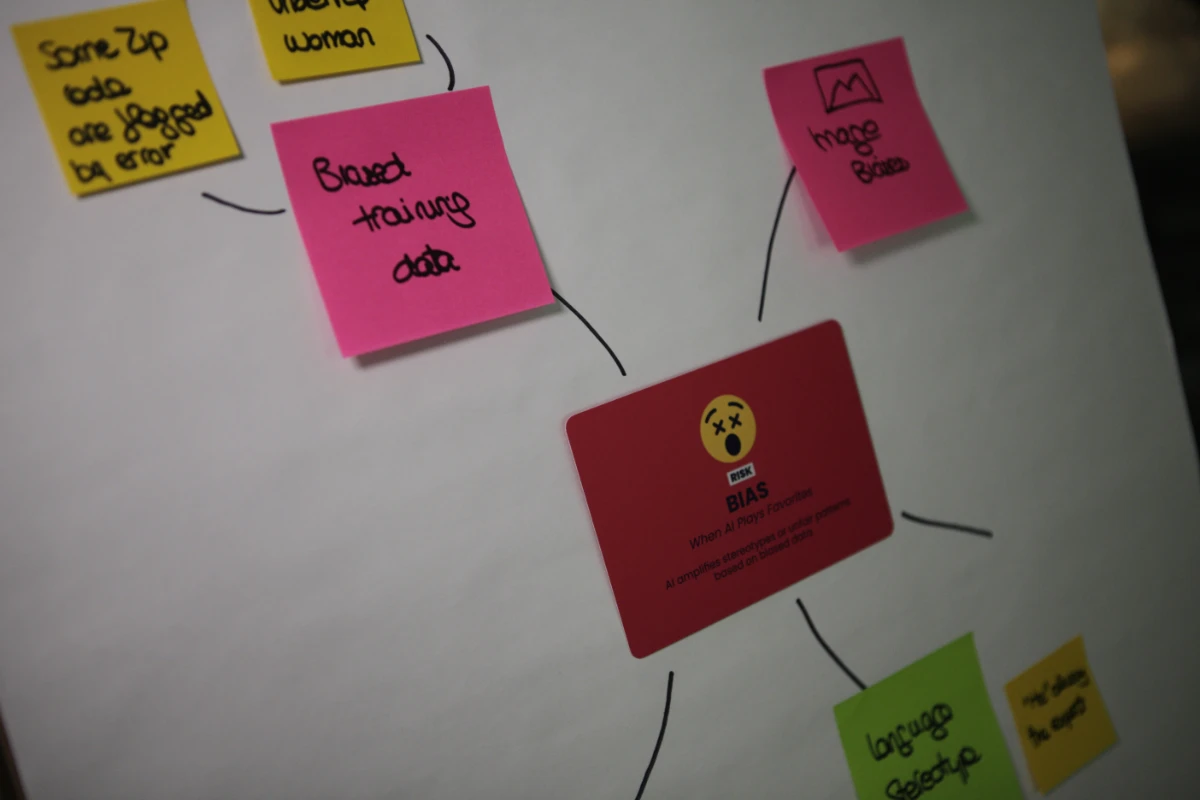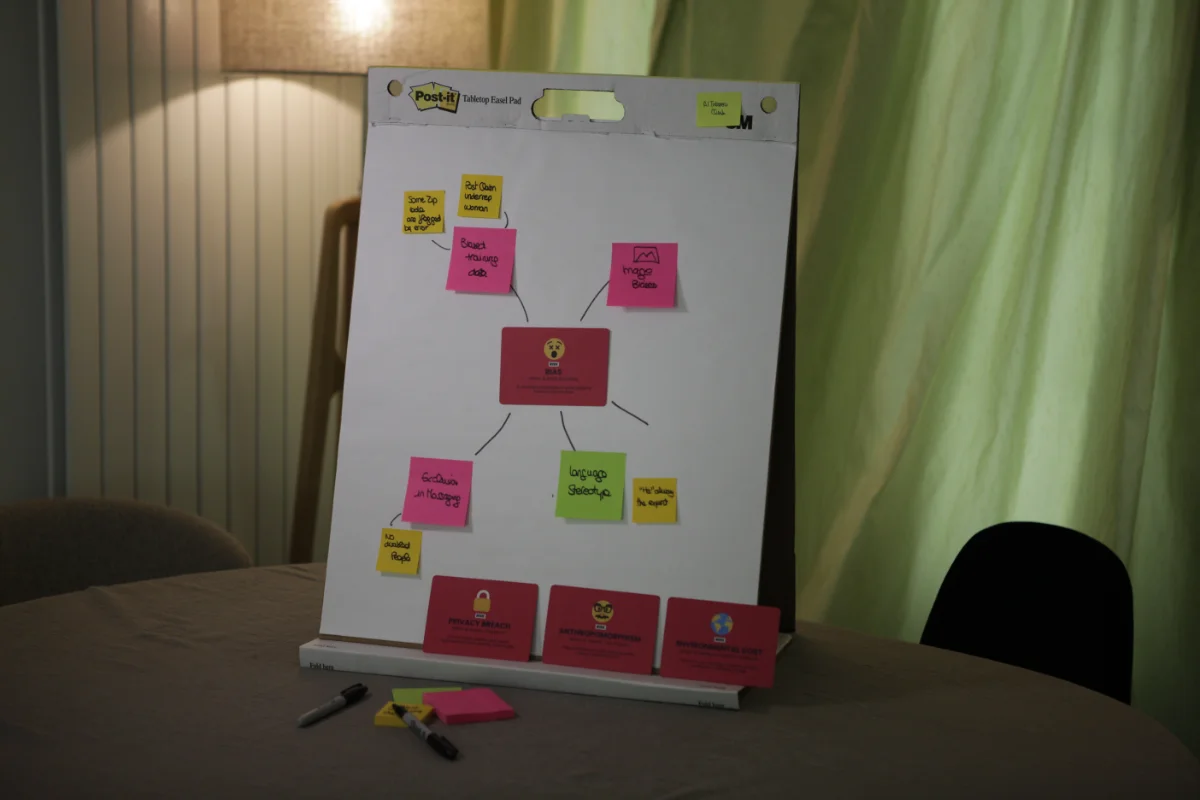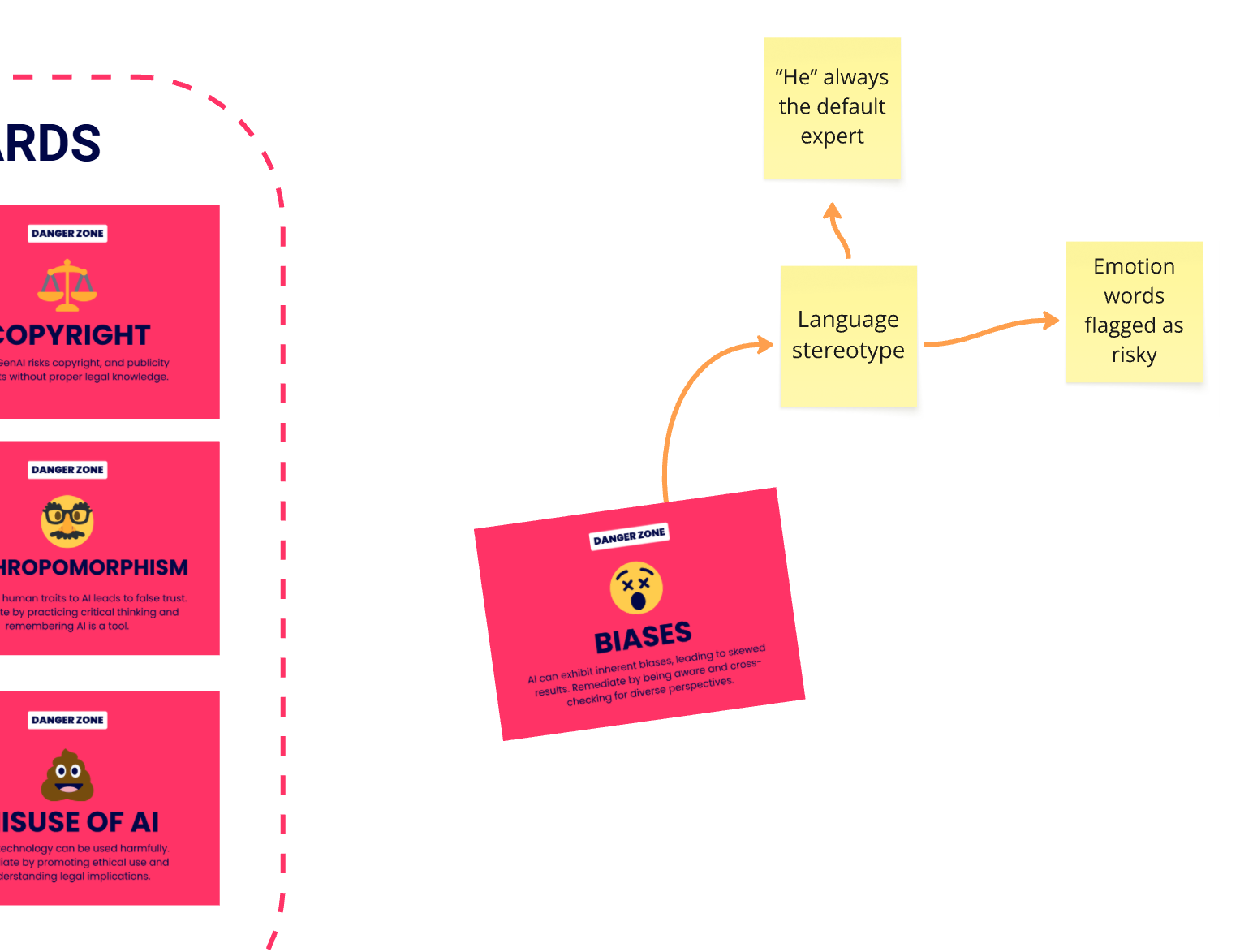Mind Mapping with Cards: A simple way to explore a topic collaboratively
There are so many ways to use cards.
Here's one that I keep coming back to.
It's simple, flexible, and it works both in-person and online.
It starts with a card, a sheet of paper, and a few post-it notes.
Build a Mind Map Around a Card
Take one card and place it in the center of a big sheet of paper. I often use those Post-it® Tabletop Easel Pads—they're portable, they stand on their own, and you can also stick them to the wall. I love them so much I have a small stock at home!

Use a bit of Patafix if needed to hold the card in place. Then ask your participants to create a mind map around the card using post-it notes: short ideas, examples, or questions—one per note.
They can organize it however they want: branches, clusters, color codes. It becomes their visual thinking space.
You can give one card per table, each one covering a different angle of the topic. After the initial round, participants can walk from table to table to explore the other mind maps. It's quick, collaborative, and it naturally sparks rich discussions.
Of course, this design pattern works well with the AI Tinkerers Cards, both in the physical and digital versions. You can do a mindmap with the Risk cards to explore the risks of AI or you could do a mindmap with the Input cards to brainstorm creative ways to use AI.
Example: The Bias Card in a Communication Workshop
Let's imagine we're running a workshop for the communication department of an insurance company. One group receives the Bias risk card. It reads:
Participants begin building their mind map. They might add notes like:
- Some ZIP codes are flagged by error
- Past claims underrepresent women
- Ads show only young professionals
- "He" always the default expert
- Emotion words flagged as risky
- No disabled people shown in visuals
That's already a conversation. And there's more.
This card includes a QR code linking to a real-world example—an article that illustrates the risk in practice. You can start the activity by scanning the code and reading together. It's a great way to ground the discussion before jumping into the mind map.
Here's what it might look like in action:

And of Course, It Works Digitally Too
This activity is just as easy to run on a shared whiteboard. The AI Tinkerers Base Game now includes a Miro board template that's ready to go. You can drag the card, build branches, and collaborate just like you would with pen and paper.
Here's an example using the Bias card on Miro:

This is just one design pattern. I'll be sharing more in future posts.
If you want to try this one, you can start with the Starter Kit or get the full base deck.
And if you're already using the cards—physical or digital—I'd love to see what you create.
👉 Ready to try mind mapping with cards? Get the Starter Kit for 1€